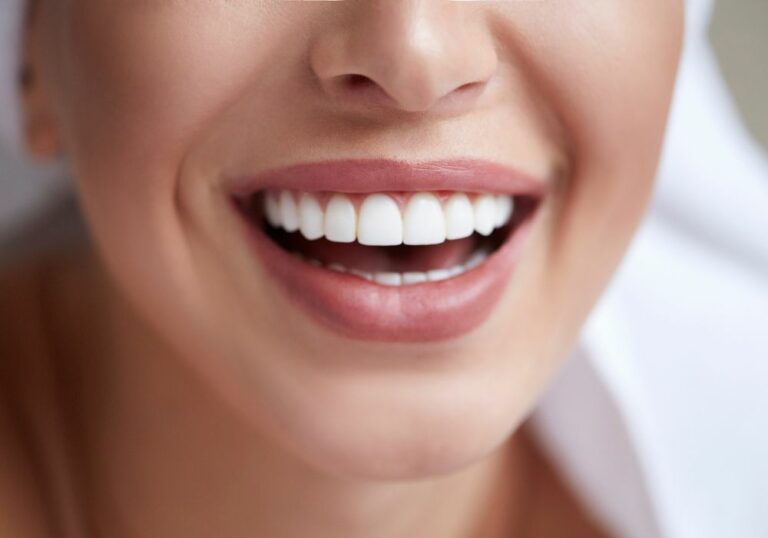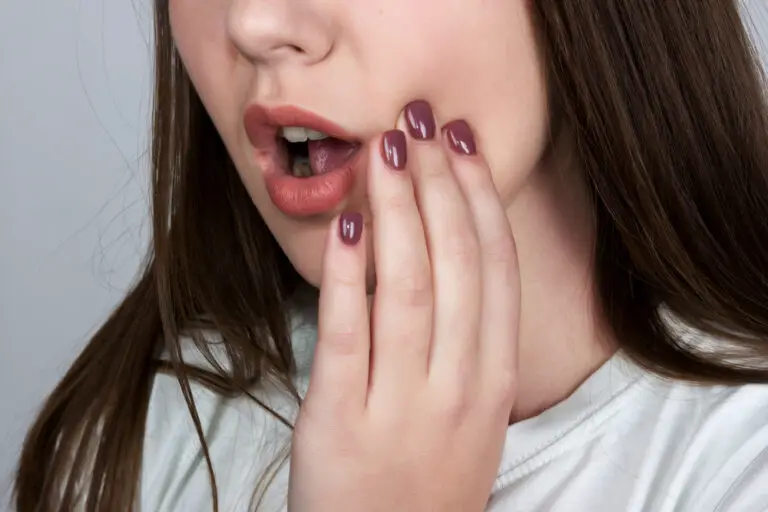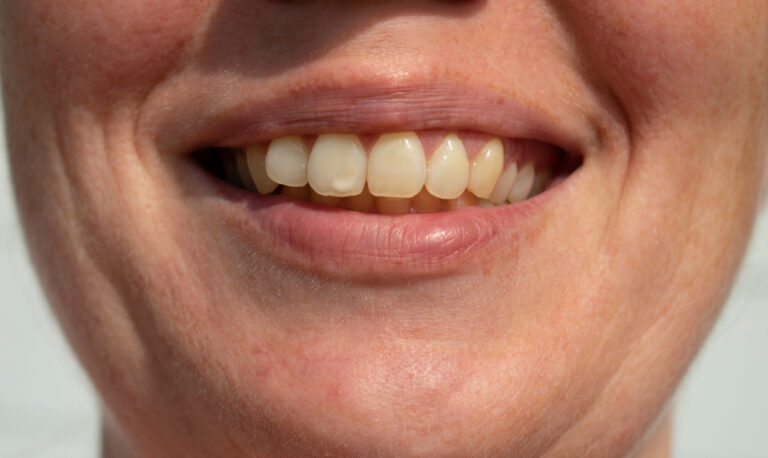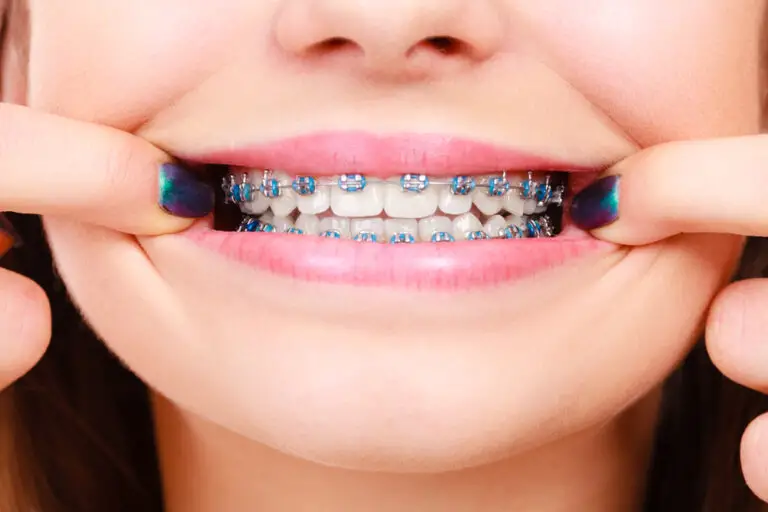Keeping your teeth healthy is important for your overall well-being. While flossing is a recommended practice for maintaining oral hygiene, it may not always be possible or desirable for everyone. Fortunately, there are alternative ways to keep your teeth healthy without flossing.
Regular brushing is the most effective way to care for your teeth and gums. Brush your teeth twice a day with fluoride toothpaste and a soft-bristled toothbrush. Be sure to brush all surfaces of your teeth, including the front, back, and chewing surfaces. You should also brush your tongue to remove bacteria and freshen your breath.
Another alternative to flossing is using a water flosser or airflosser. These devices work by spraying water, mouthwash, air, or a combination of these between the teeth to remove food particles and plaque. If you’re considering a water flosser, you may want to look into a Waterpik, which is a popular brand. Remember, while flossing is a great way to keep your teeth healthy, it’s not the only way. By incorporating these alternative practices into your oral hygiene routine, you can maintain a healthy smile.
Understanding the Importance of Oral Hygiene
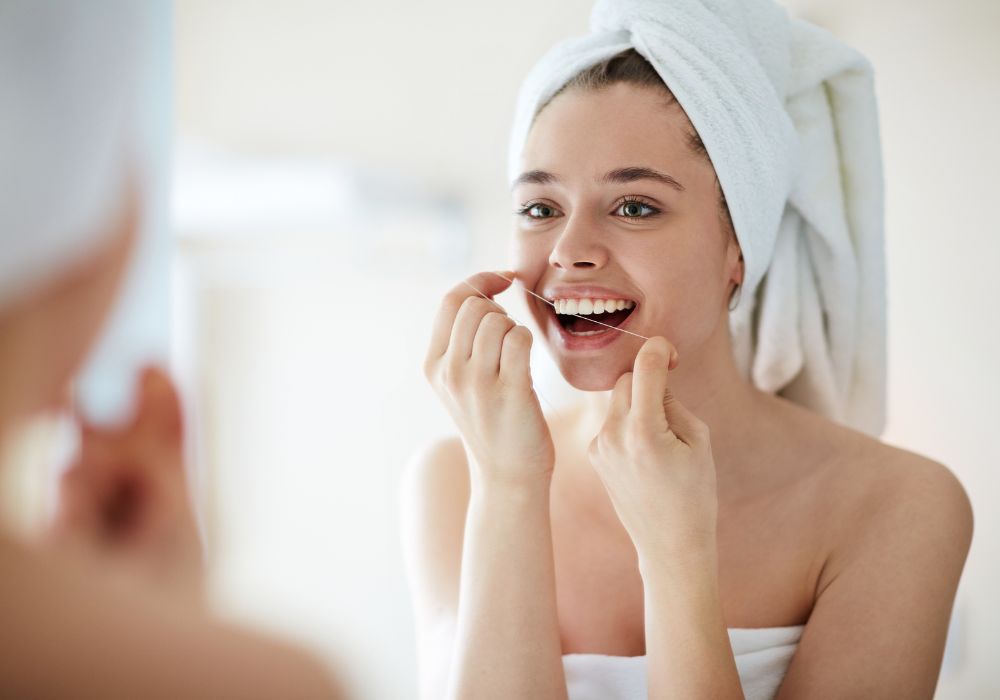
Maintaining good oral hygiene is essential for keeping your teeth healthy and preventing dental problems such as cavities, gum disease, and bad breath. While flossing is an important part of oral hygiene, there are other ways to keep your teeth and gums healthy if you are unable or unwilling to floss.
Here are some tips to help you understand the importance of oral hygiene:
- Brush your teeth twice a day: Brushing your teeth twice a day with fluoride toothpaste helps to remove plaque and prevent tooth decay. Use a soft-bristled toothbrush and brush gently in a circular motion.
- Use mouthwash: Mouthwash helps to kill bacteria and freshen your breath. Look for a mouthwash that contains fluoride to help prevent tooth decay.
- Chew sugar-free gum: Chewing sugar-free gum after meals helps to stimulate the production of saliva, which helps to neutralize acid in the mouth and prevent tooth decay.
- Avoid sugary and acidic foods: Sugary and acidic foods can erode tooth enamel and cause cavities. Limit your intake of sugary and acidic foods and drinks, and rinse your mouth with water after consuming them.
- Visit your dentist regularly: Regular dental check-ups and cleanings are essential for maintaining good oral health. Your dentist can detect and treat dental problems early, before they become more serious.
By following these tips, you can keep your teeth and gums healthy without flossing. Remember, good oral hygiene is important for your overall health and well-being.
Why Flossing Isn’t the Only Solution
Flossing is an essential part of maintaining good oral hygiene, but it isn’t the only solution to keeping your teeth healthy. While flossing can help remove plaque and food particles from between your teeth, there are other ways to achieve the same goal. Here are a few reasons why flossing isn’t the only solution:
Interdental Brushes
Interdental brushes are small brushes that are designed to clean between your teeth. They are available in various sizes, and you can choose the one that fits the space between your teeth. Interdental brushes are easy to use, and they can help remove plaque and food particles that are stuck between your teeth.
Water Flossers
Water flossers are another alternative to traditional flossing. They use a stream of water to clean between your teeth and remove plaque and food particles. Water flossers are easy to use, and they are particularly useful for people with braces or other dental appliances.
Mouthwash
Mouthwash is an excellent addition to your oral hygiene routine. It can help kill bacteria in your mouth and freshen your breath. While mouthwash isn’t a substitute for flossing, it can help reduce the amount of plaque and bacteria in your mouth.
Proper Brushing Technique
Proper brushing technique is critical to maintaining good oral hygiene. You should brush your teeth for at least two minutes twice a day, using a fluoride toothpaste. Be sure to brush all surfaces of your teeth, including the fronts, backs, and chewing surfaces. You should also brush your tongue to remove bacteria and freshen your breath.
In conclusion, while flossing is an essential part of maintaining good oral hygiene, it isn’t the only solution. Interdental brushes, water flossers, mouthwash, and proper brushing technique are all excellent alternatives to traditional flossing. By incorporating these techniques into your oral hygiene routine, you can keep your teeth healthy and your smile bright.
Effective Brushing Techniques
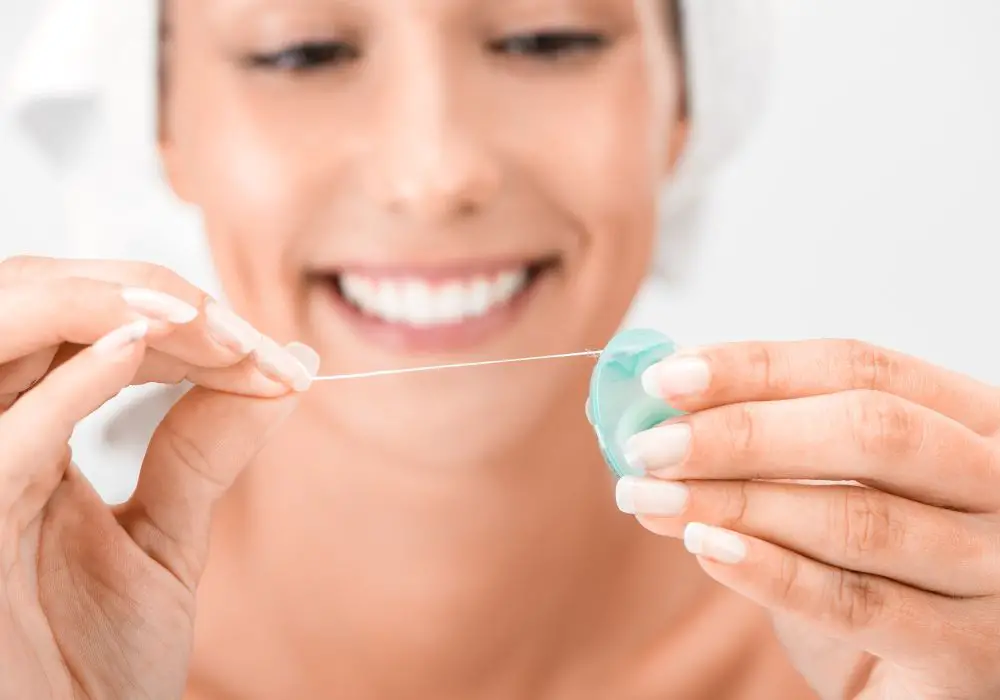
Choosing the Right Toothbrush
The first step to effective brushing is selecting the right toothbrush. You want to choose a toothbrush with soft bristles that won’t damage your gums. Hard bristles can cause gum recession and enamel erosion, which can lead to tooth sensitivity and cavities.
Electric toothbrushes are also a good option as they can remove more plaque than manual toothbrushes. However, they can be expensive, so make sure to choose one that fits your budget. Remember to replace your toothbrush or toothbrush head every three to four months or when the bristles start to fray.
Proper Brushing Method
Once you have the right toothbrush, it’s time to brush your teeth properly. Here’s how:
- Hold your toothbrush at a 45-degree angle to your teeth.
- Use gentle circular motions to clean the front, back, and top of your teeth.
- Don’t forget to brush your tongue to remove bacteria and freshen your breath.
- Brush for at least two minutes, twice a day.
It’s important to brush your teeth thoroughly but gently. Brushing too hard can damage your gums and tooth enamel. If you’re not sure if you’re brushing correctly, ask your dentist or dental hygienist to demonstrate the proper technique.
In summary, choosing the right toothbrush and brushing your teeth properly are key to maintaining good oral hygiene. Remember to brush for at least two minutes, twice a day, and to replace your toothbrush regularly.
Incorporating Mouthwash into Your Routine
If you’re looking for an alternative to flossing, incorporating mouthwash into your oral care routine can be a great option. Mouthwash can help remove food particles and bacteria from your mouth, freshen your breath, and promote healthy teeth and gums. Here are some tips for incorporating mouthwash into your routine:
- Brush your teeth first: Before using mouthwash, it’s important to brush your teeth thoroughly with fluoride toothpaste. This will help remove any food particles or plaque that may be present on your teeth and ensure that the mouthwash can reach all areas of your mouth.
- Choose the right mouthwash: There are many different types of mouthwash available, so it’s important to choose one that is right for your needs. Look for a mouthwash that contains fluoride, which can help strengthen your teeth and prevent cavities. If you have sensitive teeth or gums, look for a mouthwash that is specifically formulated for sensitive mouths.
- Use mouthwash correctly: To use mouthwash correctly, pour a small amount into a cup and swish it around your mouth for 30 seconds to 1 minute. Be sure to spit the mouthwash out when you’re done, and avoid rinsing your mouth with water afterwards.
- Don’t rely on mouthwash alone: While mouthwash can be a great addition to your oral care routine, it’s important to remember that it’s not a substitute for brushing and flossing. Be sure to continue brushing your teeth twice a day and flossing at least once a day to keep your teeth and gums healthy.
Incorporating mouthwash into your daily routine can be a simple and effective way to promote healthy teeth and gums. By choosing the right mouthwash and using it correctly, you can help remove plaque and bacteria from your mouth, freshen your breath, and keep your smile looking its best.
The Role of Diet in Dental Health
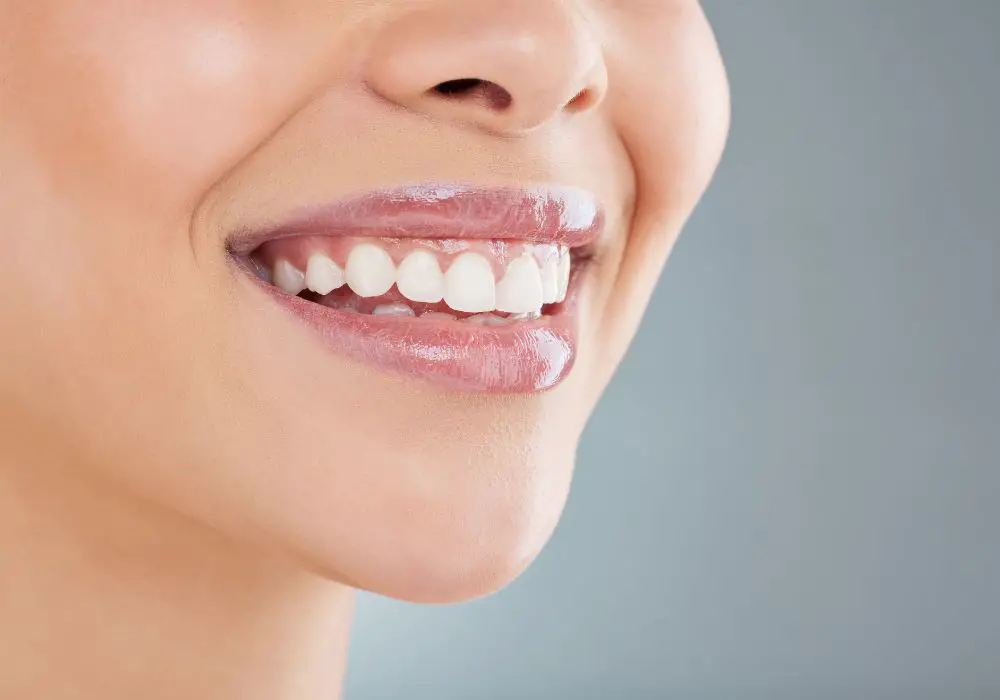
Maintaining good dental health is not just about brushing and flossing regularly. Your diet also plays a crucial role in keeping your teeth healthy. In this section, we will discuss the foods you should avoid and the ones you should include in your diet to promote dental health.
Foods to Avoid
Certain foods and drinks can harm your teeth and increase your risk of developing dental problems. Here are some foods to avoid or limit in your diet:
| Foods to Avoid | Why? |
|---|---|
| Sugary snacks and drinks | Bacteria in your mouth feed on sugar and produce acid that can erode your tooth enamel, leading to cavities. |
| Sticky and chewy foods | These foods can stick to your teeth for a longer time, increasing the risk of decay. |
| Acidic foods and drinks | They can erode your tooth enamel and make your teeth more vulnerable to decay. |
Foods to Include
Including the right foods in your diet can strengthen your teeth and promote good dental health. Here are some foods you should include in your diet:
- Calcium-rich foods: Calcium is essential for strong teeth and bones. Include dairy products like milk, cheese, and yogurt, as well as leafy greens like spinach and kale in your diet.
- Crunchy fruits and vegetables: Fruits and vegetables like apples, carrots, and celery can help clean your teeth and stimulate saliva production, which neutralizes harmful acids in your mouth.
- Water: Drinking plenty of water can help wash away food particles and bacteria from your mouth, preventing decay and bad breath.
By avoiding sugary and acidic foods and including calcium-rich foods, crunchy fruits and vegetables, and plenty of water in your diet, you can promote good dental health without relying on flossing alone.
Regular Dental Checkups
Regular dental checkups are essential for maintaining good oral health. Even if you brush and floss your teeth every day, there are still areas in your mouth that you may miss, leading to plaque buildup and other dental problems. A dental checkup can help catch any issues early on, before they become bigger and more expensive to treat.
During a dental checkup, your dentist will examine your teeth and gums, looking for signs of decay, gum disease, and other dental problems. They may also take X-rays to get a better look at your teeth and jawbone. If they find any issues, they will discuss treatment options with you and create a personalized treatment plan.
Most dentists recommend getting a dental checkup every six months. However, the frequency of your visits may depend on your individual needs. For example, if you have a history of dental problems, your dentist may recommend more frequent checkups.
In addition to catching dental problems early on, regular checkups can also help prevent them from occurring in the first place. Your dentist can provide you with tips on how to improve your oral hygiene routine and recommend products that may be beneficial, such as a specific toothbrush or mouthwash.
Overall, regular dental checkups are an important part of maintaining good oral health. They can help catch dental problems early on, prevent future issues, and keep your teeth and gums healthy for years to come.
Exploring Alternative Cleaning Tools
If you’re looking for ways to keep your teeth healthy without flossing, there are several alternative cleaning tools you can use. Here are some options to consider:
Interdental Brushes
Interdental brushes are small, cone-shaped brushes that are designed to clean between teeth. They come in various sizes, so you can choose the one that fits between your teeth comfortably. Interdental brushes are particularly useful for people who have wider spaces between their teeth, or who have braces or other dental appliances that make flossing difficult.
To use an interdental brush, insert it gently between your teeth and move it back and forth a few times. Be sure to clean both sides of each tooth, and use a fresh brush for each space.
Water Flossers
Water flossers, also known as oral irrigators, use a stream of water to clean between teeth and along the gumline. They can be particularly useful for people with braces or other dental appliances, or for those who have trouble using traditional floss.
To use a water flosser, fill the reservoir with warm water and aim the tip at the spaces between your teeth. Turn on the device and let the water do the work, moving the tip along the gumline and between each tooth.
Tongue Scrapers
Tongue scrapers are small tools that are designed to remove bacteria and debris from your tongue. While they don’t clean between teeth, they can help improve overall oral hygiene and freshen your breath.
To use a tongue scraper, hold the tool at the back of your tongue and gently pull it forward. Rinse the scraper after each pass, and repeat until you’ve cleaned the entire surface of your tongue.
Remember, while these alternative cleaning tools can be helpful, they’re not a substitute for regular brushing and professional dental care. Be sure to brush twice a day with fluoride toothpaste, and visit your dentist regularly for cleanings and checkups.
Frequently Asked Questions
What are some alternatives to flossing for keeping teeth clean?
There are several alternatives to flossing that you can use to keep your teeth clean and healthy. One option is to use interdental brushes, which are small brushes that can be used to clean between teeth. Another option is to use water flossers, which use a stream of water to clean between teeth and along the gumline. You can also use dental picks or rubber tip stimulators to clean between teeth.
How can I clean my gums without using floss?
If you want to clean your gums without using floss, you can try using a water flosser or interdental brushes. Both of these options can help to clean between teeth and along the gumline, removing plaque and food particles that can cause gum disease.
Are there any natural options for flossing?
Yes, there are several natural options for flossing that you can try. One option is to use a wooden toothpick to clean between teeth. Another option is to use a water flosser with warm salt water, which can help to kill bacteria and soothe inflamed gums.
Can using interdental brushes replace flossing?
Interdental brushes can be a great alternative to flossing, as they can effectively clean between teeth and along the gumline. However, it’s important to note that interdental brushes should not completely replace flossing. Flossing is still important for removing plaque and food particles that may be stuck in hard-to-reach areas.
What are some pre-threaded flossing options?
Pre-threaded flossing options are a convenient option for those who find traditional flossing difficult. One option is to use floss picks, which are small plastic tools with a piece of floss attached. Another option is to use pre-threaded flossers, which have a piece of floss attached to a handle.
Is it possible to keep teeth healthy without flossing?
While flossing is an important part of maintaining good oral health, it is possible to keep your teeth healthy without flossing. You can use alternative methods such as interdental brushes, water flossers, or dental picks to clean between teeth and along the gumline. It’s also important to brush your teeth twice a day and see your dentist regularly for cleanings and check-ups.

